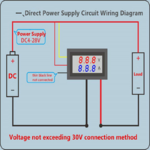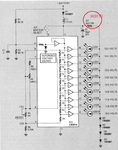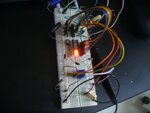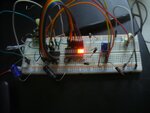kingtal0n
Junior Member level 3
Hello,
I am trying to use ( LM3914 ) like this:
https://circuitdigest.com/electronic-circuits/lm3914-voltmeter-circuit
As a voltage meter, lighting LED one at a time based on voltage.
My question is, the way the circuit is normally setup is to light each LED per 1.5v 'steps' give or take
What I want it to do instead, is only show me from say 10v to 14v range, instead of 0-15v range.
In other words I'd like more resolution between 10 and 15 volts and to basically ignore the 0-10v range (because the battery never goes that low)
I am trying to use it to show whether the in-car alternator is working or not. Alternator puts out 14v~ when charging and only battery voltage (10-12v depending how dead it is) when the alternator fails.
thanks for looking!
- - - Updated - - -
I found this and I think it answers my question, will update when I produce a project
**broken link removed**
I am trying to use ( LM3914 ) like this:
https://circuitdigest.com/electronic-circuits/lm3914-voltmeter-circuit
As a voltage meter, lighting LED one at a time based on voltage.
My question is, the way the circuit is normally setup is to light each LED per 1.5v 'steps' give or take
What I want it to do instead, is only show me from say 10v to 14v range, instead of 0-15v range.
In other words I'd like more resolution between 10 and 15 volts and to basically ignore the 0-10v range (because the battery never goes that low)
I am trying to use it to show whether the in-car alternator is working or not. Alternator puts out 14v~ when charging and only battery voltage (10-12v depending how dead it is) when the alternator fails.
thanks for looking!
- - - Updated - - -
I found this and I think it answers my question, will update when I produce a project
**broken link removed**



